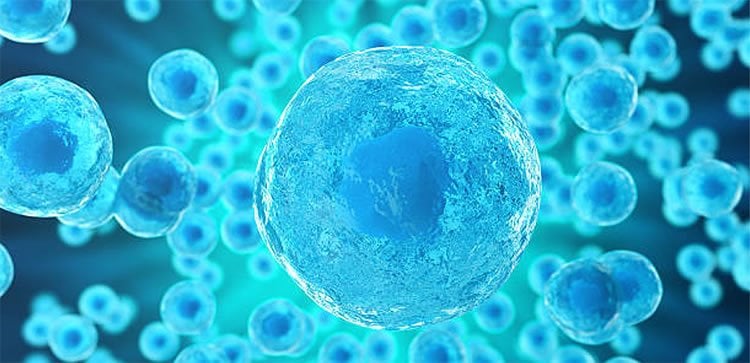Summary: A new study reports it is possible to reverse the effects of aging, at least on a cellular level. Researchers say molecules called senolytics can reverse the impact of aged, senescent cells.
Source: University of Minnesota Medical School.
What’s the secret to aging well? University of Minnesota Medical School researchers have answered it- on a cellular level.
Aging starts in our cells, and those aging cells can hasten cellular senescence, leading to tissue dysfunction and related health impacts.
New research involving University of Minnesota Medical School faculty Paul D. Robbins and Laura J. Niedernhofer, recently published in Nature Medicine, shows there are types of small molecules called senolytics that can reverse the impact of aged, senescent cells.
“We’ve always thought of aging as a process, not a disease,” said Dr. Robbins, Associate Director of the newly founded Institute on the Biology of Aging and Metabolism (iBAM). “But what if we can influence the impacts of aging at a cellular level to promote healthy aging? That’s what senolytics seeks to achieve.”
The research determined whether introducing senescent cells to human and animal tissue would impact the cellular health of surrounding cells. Surprisingly, the transplant of a relatively small number of senescent cells caused persistent physical dysfunction as well as the spread of cellular senescence in previously healthy cells.
In addition, researchers found that a high fat diet, which causes a type of metabolic stress, or simply being old, enhances the physical dysfunction that comes from senescent cells.
“Previous research has shown that our immune system’s ability to eliminate or deal with senescent cells is based 30 percent on genetics and 70 percent on environment,” said Dr. Robbins, noting that what we eat and how often we exercise can affect senescence or aging of cells.

Conversely, the researchers determined that treatment with senolytic drugs, able to eliminate senescent cells, can reverse physical dysfunction and actually extend lifespan even when used in aged animal models.
“We saw greater activity, more endurance, and greater strength following use of senolytics,” said Dr. Robbins.
The paper notes that the results provide proof-of-concept evidence that improved health and lifespan in animals is possible by targeting senescent cells. The hope is that senolytics will prove effective in alleviating physical dysfunction and resulting loss of independence in older adult humans as well.
“This area of research is promising, not just to address the physical decline that comes with aging, but also to enhance the health of cancer survivors treated with radiation or chemotherapy – two treatments that can induce cell senescence,” said Laura Niedernhofer, Director of iBAM.
This study was done in collaboration with James Kirkland, MD, Ph.D., and Tamara Tchkonia, Ph.D., Mayo Clinic.
Source: Krystle Barbour – University of Minnesota Medical School
Publisher: Organized by NeuroscienceNews.com.
Image Source: NeuroscienceNews.com image is adapted from the University of Minnesota news release.
Original Research: Abstract for “Senolytics improve physical function and increase lifespan in old age” by Ming Xu, Tamar Pirtskhalava, Joshua N. Farr, Bettina M. Weigand, Allyson K. Palmer, Megan M. Weivoda, Christina L. Inman, Mikolaj B. Ogrodnik, Christine M. Hachfeld, Daniel G. Fraser, Jennifer L. Onken, Kurt O. Johnson, Grace C. Verzosa, Larissa G. P. Langhi, Moritz Weigl, Nino Giorgadze, Nathan K. LeBrasseur, Jordan D. Miller, Diana Jurk, Ravinder J. Singh, David B. Allison, Keisuke Ejima, Gene B. Hubbard, Yuji Ikeno, Hajrunisa Cubro, Vesna D. Garovic, Xiaonan Hou, S. John Weroha, Paul D. Robbins, Laura J. Niedernhofer, Sundeep Khosla, Tamara Tchkonia & James L. Kirkland in Nature Medicine. Published July 9 2018.
doi:10.1038/s41591-018-0092-9
[cbtabs][cbtab title=”MLA”]University of Minnesota Medical School”It Is Possible to Reverse Damage Caused by Aging.” NeuroscienceNews. NeuroscienceNews, 2 October 2018.
<https://neurosciencenews.com/aging-cell-reversal-9948/>.[/cbtab][cbtab title=”APA”]University of Minnesota Medical School(2018, October 2). It Is Possible to Reverse Damage Caused by Aging. NeuroscienceNews. Retrieved October 2, 2018 from https://neurosciencenews.com/aging-cell-reversal-9948/[/cbtab][cbtab title=”Chicago”]University of Minnesota Medical School”It Is Possible to Reverse Damage Caused by Aging.” https://neurosciencenews.com/aging-cell-reversal-9948/ (accessed October 2, 2018).[/cbtab][/cbtabs]
Abstract
Senolytics improve physical function and increase lifespan in old age
Physical function declines in old age, portending disability, increased health expenditures, and mortality. Cellular senescence, leading to tissue dysfunction, may contribute to these consequences of aging, but whether senescence can directly drive age-related pathology and be therapeutically targeted is still unclear. Here we demonstrate that transplanting relatively small numbers of senescent cells into young mice is sufficient to cause persistent physical dysfunction, as well as to spread cellular senescence to host tissues. Transplanting even fewer senescent cells had the same effect in older recipients and was accompanied by reduced survival, indicating the potency of senescent cells in shortening health- and lifespan. The senolytic cocktail, dasatinib plus quercetin, which causes selective elimination of senescent cells, decreased the number of naturally occurring senescent cells and their secretion of frailty-related proinflammatory cytokines in explants of human adipose tissue. Moreover, intermittent oral administration of senolytics to both senescent cell–transplanted young mice and naturally aged mice alleviated physical dysfunction and increased post-treatment survival by 36% while reducing mortality hazard to 65%. Our study provides proof-of-concept evidence that senescent cells can cause physical dysfunction and decreased survival even in young mice, while senolytics can enhance remaining health- and lifespan in old mice.






